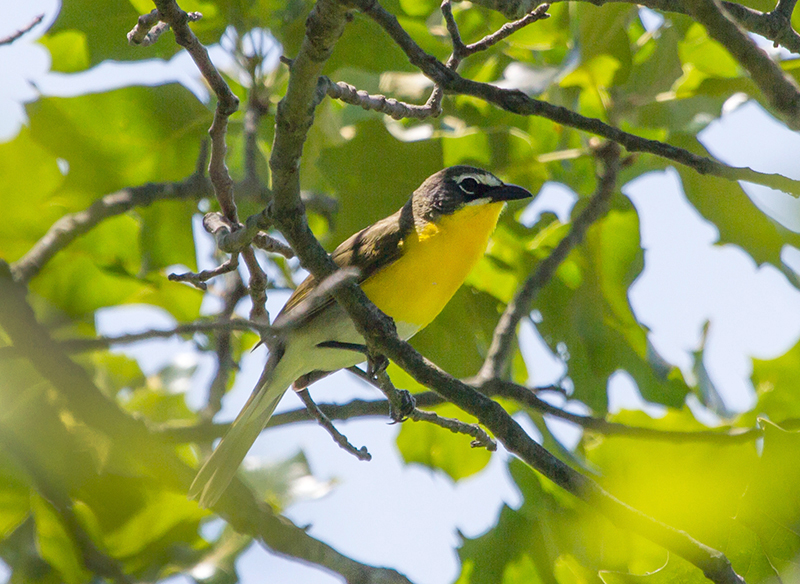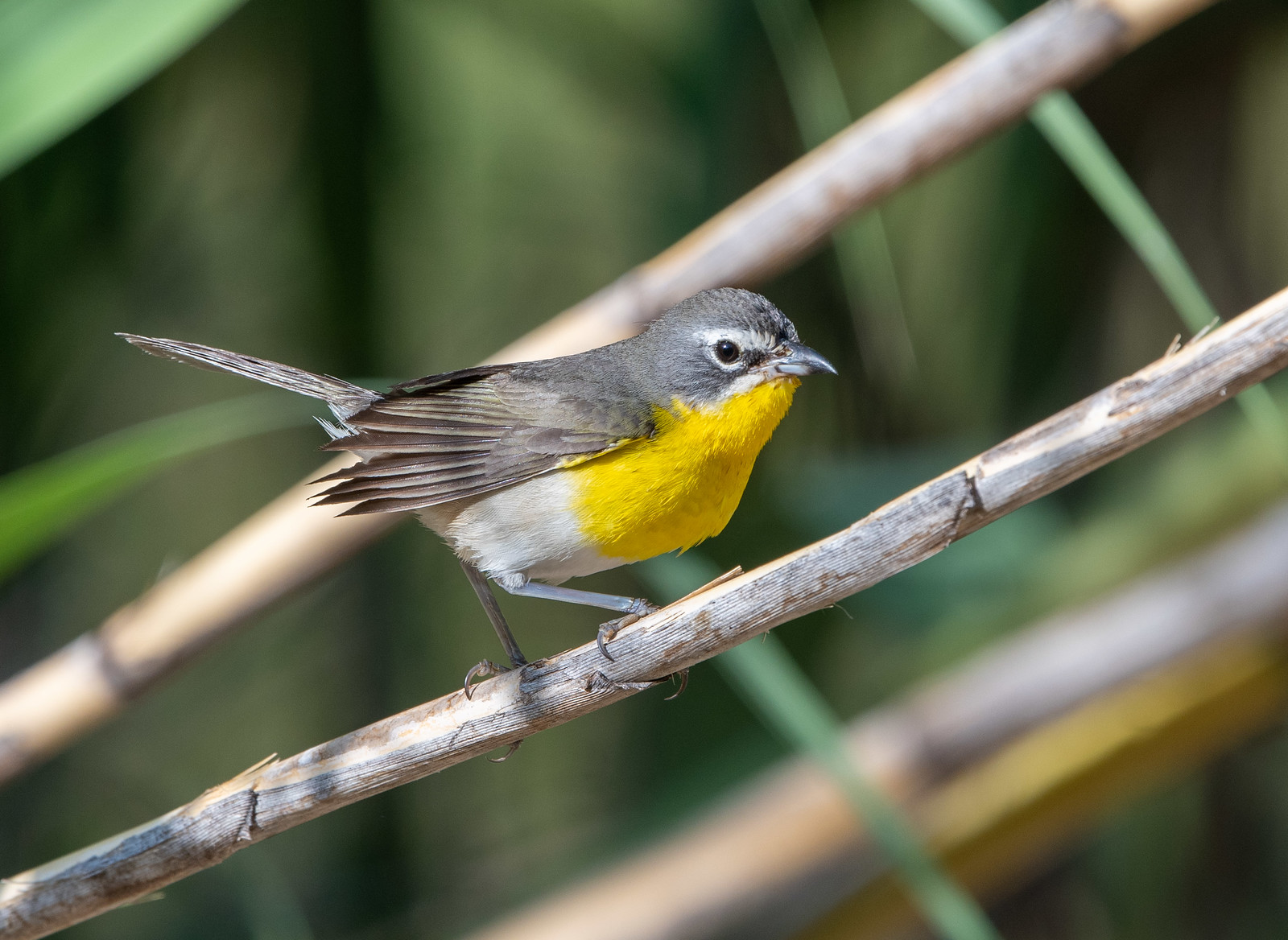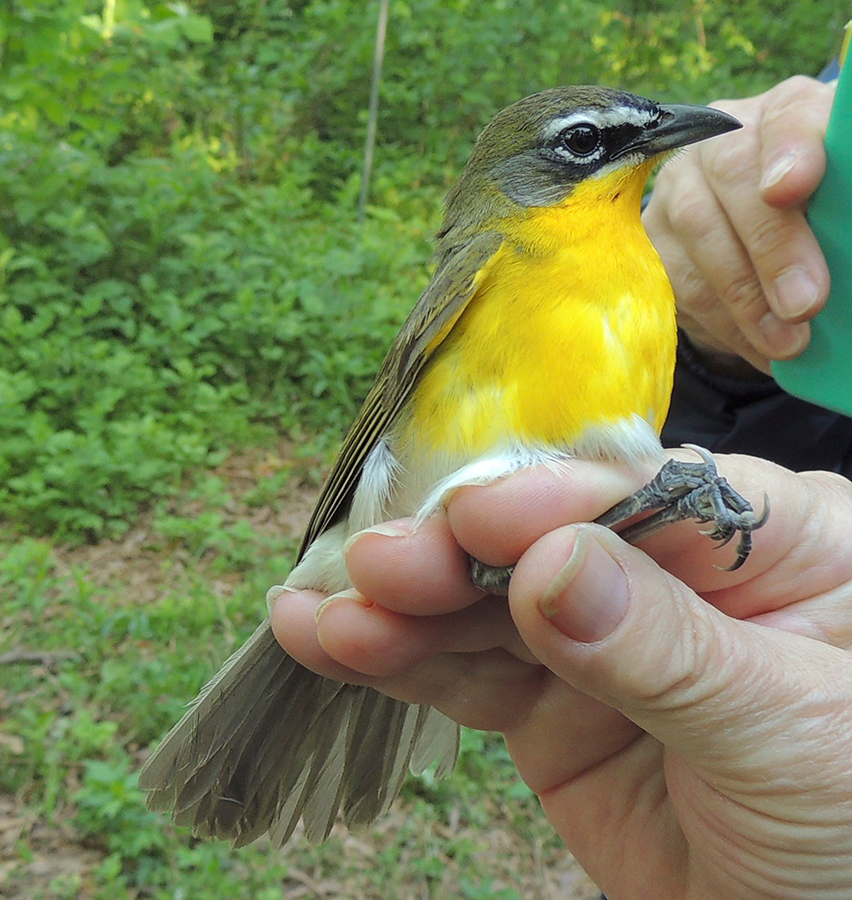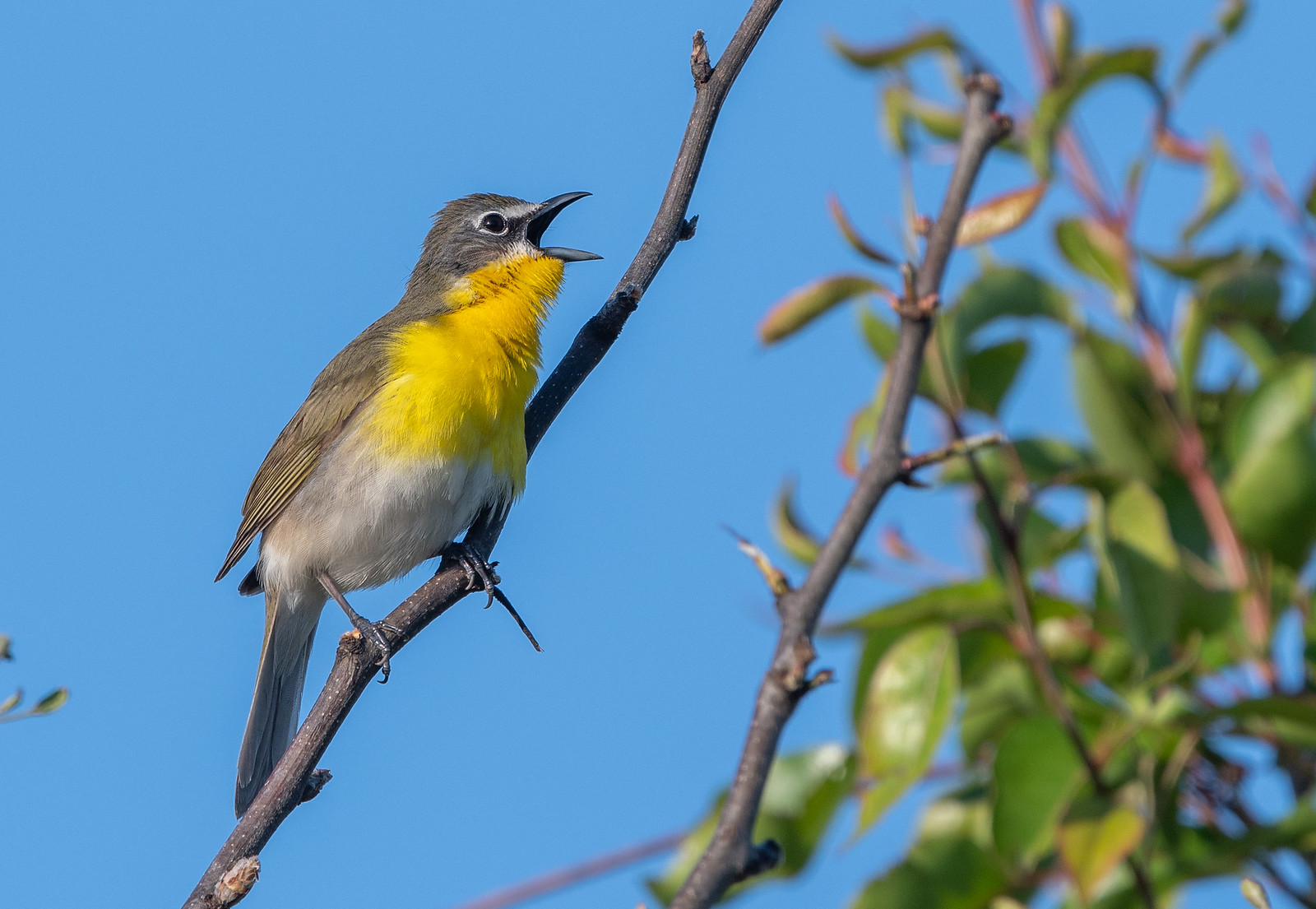| Infrequently Seen |
Yellow-breasted Chats nest in the Washington metro area, but they are extremely uncommon at Monticello Park in both the spring and fall.
Where to See Them in the Park
There is no best place to see Yellow-breasted Chats at Monticello. The park is small and does not have open areas near thickets that the species prefers.
Physical Description

The throat and breast of the Yellow-breasted Chat are bright yellow, and when a male is singing in bright sunlight, the throat can appear orange. The back is olive with no wingbars, and the bill is large like a blackbird's bill. The male's lores (feathers between the bill and the eye) are black, and there is a white line over the eye.

Females look like males, except the lores are slaty-gray rather than black. The difference can be very difficult to see in the field.

In 2017, the bird banding station at Occoquan Bay National Wildlife Refuge captured what was probably a second-year male Yellow-breasted Chat. The wing and tail feathers were very worn. Birds with worn tail and wing feathers were probably born the previous year. Second-year birds generally do not molt their flight and tail feathers until after the breeding season.
Vocalizations

The song of the Yellow-breasted Chat is a lazy combination of squeaks and squawks, reminiscent of a Northern Mockingbird.
Hear the song of the Yellow-breasted Chat.
Notes
Ornithologists now agree with birders who have long wondered why the relatively large Yellow-breasted Chat was included among the relatively small New World warblers. It looks like the type of species a warbler might try to feed if its nest has been parasitized by a larger bird. The chat also does not have a song like any of the other wood warblers. Yellow-breasted Chats are in the genus Icteria. The New World blackbirds are in the family Icteridae, and some ornithologists think the chat should be moved to that family. The case for doing this was bolstered by the discovery of a hybrid between a chat and an oriole in 2019. Orioles are in the New World blackbird family.
In 2017, the American Ornithological Society decided to establish a separate family for the Yellow-breasted Chat, with no other members. The chat is now considered more closely related to the Scarlet Tanager than to either the warblers or the New World blackbirds. Confusion about where the chat should be classified is nothing new. In 1759, Carl Linnaeus gave the species the scientific name Turdus virens, with Turdus being the genus of the American Robin.
Origin of Names
Common Name: Yellow-breasted from the plumage. Chat from its chattering vocalizations. Unrelated birds in other parts of the world are called chats for the same reason.
Genus Name: Icteria means jaundice, from the yellow plumage.
Species Name: Virens means green, from the olive back.
Yellow-breasted Chat video footage
Return to the Index
